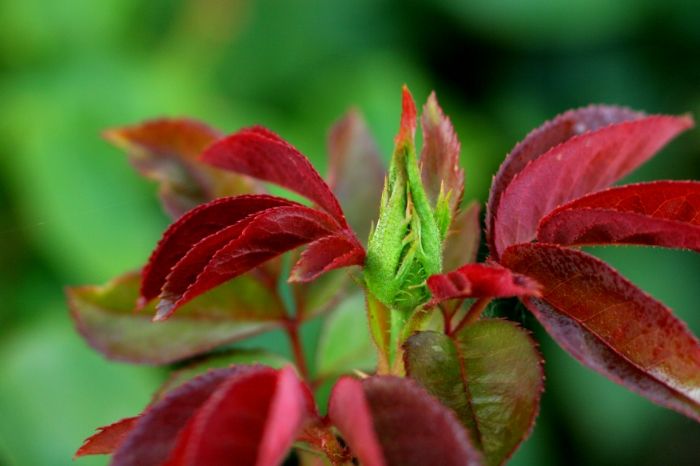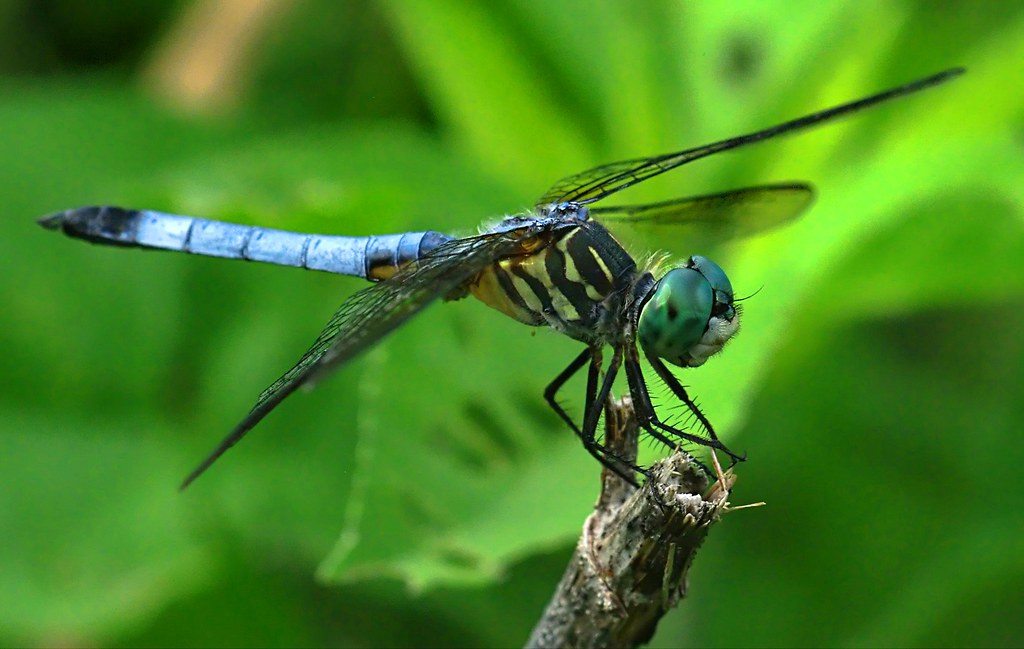|
|
Post by olroy2044 on May 12, 2013 15:04:30 GMT -5
Tried an extension tube. I think this is a #1, going by Mickey's description of his. The lens is a Tamron 103A at @ 200mm up close, on my DSLR, handheld. What do you think?  Roy |
|
lloydy
Lifetime Member
  
Posts: 506
|
Post by lloydy on May 12, 2013 16:37:29 GMT -5
I think that at that kind of magnification a tripod is useful, which is where I think your picture loses some sharpness, it's through shake and not through missed focus or any fault of the lens. But, it does show what you and that lens can do. That Tamron was one from their regular lens range, and one of their best sellers for good reason - it's a sharp lens, especially in the center. I like the older Tamrons and I've got one of these that is fungused, and it still takes decent pictures. I haven't done anything with it because it's also a bit battered and it cost me nothing. I like tubes, they're simple and effective for close focus and macro, but the camera does need to be rigid.  The bokeh from the lens is very nice and creamy, it suits close work as the background is not distracting at larger apertures. |
|
|
|
Post by olroy2044 on May 12, 2013 17:16:34 GMT -5
Thanks Lloydy The camera was rigid. It was the holder that was shaky!  Guess I better break out the tripod  I've come to really like that lens. I have used it on my K-mount and Canon FD film bodies and it has never disappointed. Mint condition, with hood and case from charity shop for $10. One of the best ten dollar bills I ever spent. Roy |
|
mickeyobe
Lifetime Member
   Resident President
Resident President
Posts: 7,280
|
Post by mickeyobe on May 12, 2013 20:27:51 GMT -5
I think the picture is excellent. ✔
Any loss of sharpness seems to me due only to lack of depth of field.
At extreme close ups it is often difficult to determine exactly where to focus. I think you were right on.
Mickey
|
|
|
|
Post by olroy2044 on May 13, 2013 0:29:18 GMT -5
Thanks, Mickey. A fairly stiff breeze was adding to the fun, also  |
|
truls
Lifetime Member
  
Posts: 568
|
Post by truls on May 14, 2013 2:31:49 GMT -5
The image is beautiful!
When shooting macro one have to stop down the lens due to the small depth of field. The background will anyhow be out of focus at this magnification. I would like to see more of your fine art pictures.
|
|
|
|
Post by philbirch on Mar 8, 2014 19:38:28 GMT -5
Yes, use a tripod and a smaller aperture to get the best out of this lens.
I know the fad is to shoot everything at full aperture and get great bokeh, but we'd never heard of that when this lens was made.
|
|
daveh
Lifetime Member
  
Posts: 4,696
|
Post by daveh on Mar 13, 2014 23:38:55 GMT -5
I don't think it's possible to come to a definite conclusion without knowing all the camera settings and what the day was like (though we do know it was breezy). All the tripods in the world don't help if it's breezy and the subject is moving. Even with all other factors taken out of the equation some lenses are softer than others. I had a zoom (something like 70-150) several years back which made every photo look blurred.
For me the photo just misses because of that lack of tack-sharpness. I think the focus is probably right - the foreground is out of focus as is the background, so something in the middle has to be in focus. It must be blur: whether that is movement of camera or subject, or just a lens that isn't up to doing a close up photo, is uncertain. I think it would need more controlled experiments to decide.
The tripod v hand-held debate is never fully resolvable. One just has to use whatever is right at the time. Tripods are better if everything else is static, but can be pretty useless in the field if the subject is moving round. Overall I've probably got a higher percentage of better shots without a tripod.
I've tried extension tubes, bellows and (add-on) close-up lenses, but I don't think that one can beat a proper macro lens for close-up photography.
|
|
|
|
Post by philbirch on Apr 12, 2014 17:02:20 GMT -5
I think that tubes is the best way to go. A Macro lens needs a bigger budget - unless you are lucky to find one in a £15 bag of gear like me.
Macro isn't hard, but finding the best focus spot isn't easy. I have difficulty with my NEX's focus magnifier and get sharp focus in the wrong place. Its just something that comes with time.
Having a sharp lens helps. An good enlarging lens is a great macro lens; El Nikkors and E-Rokkors are available really cheap on ebay at the moment
|
|
hansz
Lifetime Member
   Hans
Hans
Posts: 697
|
Post by hansz on Apr 13, 2014 4:58:44 GMT -5
Phil, how do you normally fit an enlarging lens to a for example NEX3? Bellows? Home made?
Hans
|
|
daveh
Lifetime Member
  
Posts: 4,696
|
Post by daveh on Apr 13, 2014 7:16:28 GMT -5
Over the years I've tried all the variations for macro photography. Close up is relatively easy, but true macro is another kettle of fish. Bellows and extension tubes are okay, but if you want to reatain fully automatic linkage neither is actually that cheap. One other problem is that a normal lens is not designed for focussing that close and while you get a result it will lack the real quality that a dedicated lens will give. For that reason they started making lens reversers. I find close-up lenses easier than tubes and cheaper too if you get one of those Chinese made sets with +1, +2, +4 and +10. I'm not sure there is real quality in them, but they do a job.
Where close-up photography is concerned there isn't usually too much problem with light. It is a problem with macro though, and with it comes the problem of depth of field. Flash is useful.
.... And there I have to leave it for now.
|
|
|
|
Post by julio1fer on Apr 13, 2014 11:48:18 GMT -5
It is a nice picture whatever the technical issues. The green and red tones make it IMHO.
These shots with wind are a problem.
|
|
|
|
Post by olroy2044 on Apr 13, 2014 22:26:11 GMT -5
I have been following with interest this discussion. I have become fascinated with the art of shooting up close and personal, so to speak. Real-world close-up and "macro" photography is much more difficult than the evidence photography i did while wearing a piece of shiny stuff (badge  ) on my shirt. Most evidence doesn't move! A tripod is almost always used, and time is not really a factor. "Artistic license" is totally verboten! In short, it is WORK!!
What I'm playing with now is FUN! It is also, IMHO, more challenging. Moving subjects, fleeting light, adverse weather, and wildly differing subjects present a whole different set of challenges. A set of challenges that do not involve precise measurements of distance , tightly controlled lighting (such as almost constant use of flash) and strict adherence to the rules of evidence. When I would set up on a tripod, at a known distance, on an unmoving subject, with a known source of light, I knew, before I fired the shutter, what the result would be. Now? Not a clue! Thanks for the nice comments on my first go at using a tube! But I'm learning!  Ol(still not too old to learn  )roy |
|
|
|
Post by philbirch on Apr 14, 2014 15:58:27 GMT -5
Phil, how do you normally fit an enlarging lens to a for example NEX3? Bellows? Home made? Hans Anything, an M42 adapter and short extension tube along with a M39 to M42 ring will give a fixed focus macro or a bellows for more versatility. My favourite right now is a focusing helicoid, it is Nex to M42, can be used as a straight M42 adapter, an adapter for B39 (Braun Paxette) lenses and as a focusing device for enlarging lenses , all four of mine work perfectly on this one: Item number 151076626764 on ebay. It fits directly to the camera and when an M42 lens is attached it focuses beyond infinity but extends considerably closer on full extension. It is versatile so I can also use normal M39 rangefinder lenses closer than normal and of course enlarging lenses. A worthwhile investment in my opinion. Add bellows or extension tubes for closer work. Attachment Deleted |
|
|
|
Post by barbarian on Apr 26, 2014 21:46:25 GMT -5
The foliage shot is very good, focus in the right place, and bokeh is very nice. Handheld, that's a great result. With the wind blowing, and that depth of field, your timing was pretty good, too. I only occasionally shoot macro. But I discovered a review about a macro lens was both extremely sharp and relatively inexpensive: It is in the optical department that the Phoenix 100mm f/3.5 macro lens shines. It is really quite sharp, with excellent center resolution, and pretty good at the edges. Stopped down to f/8 or smaller, there is very little to pick between this lens and more expensive types. It does not match the superb Tamron 180mm f/3.5 macro but it certainly is on a par with the Nikkor 28-105mm f3.5-4.5D IF AF in macro mode, and much better than that lens at the edges. It is possible to count the hairs on an insect's body, though they don't show the hard-edged crispness of the Tamron or a micro-Nikkor.
Mounting the 1:1 adapter (a 49mm screw-in two-element filter) allows the lens to focus in to life size reproduction. Again, once stopped down the results are quite respectable, especially in the center. The edges are quite acceptable.
Contrast is excellent in the "bare" mode, and not too bad with the adapter. Color rendition is a little cool.www.nikonians.org/reviews?alias=phoenix-100mm-f35-macro-lens&p=2I paid about $100 for it in a Pentax K mount, and it's pretty good:  Handheld, with the 1:1 filter attached. It's pretty cheaply made, not meant for long heavy duty, but it works for me. |
|